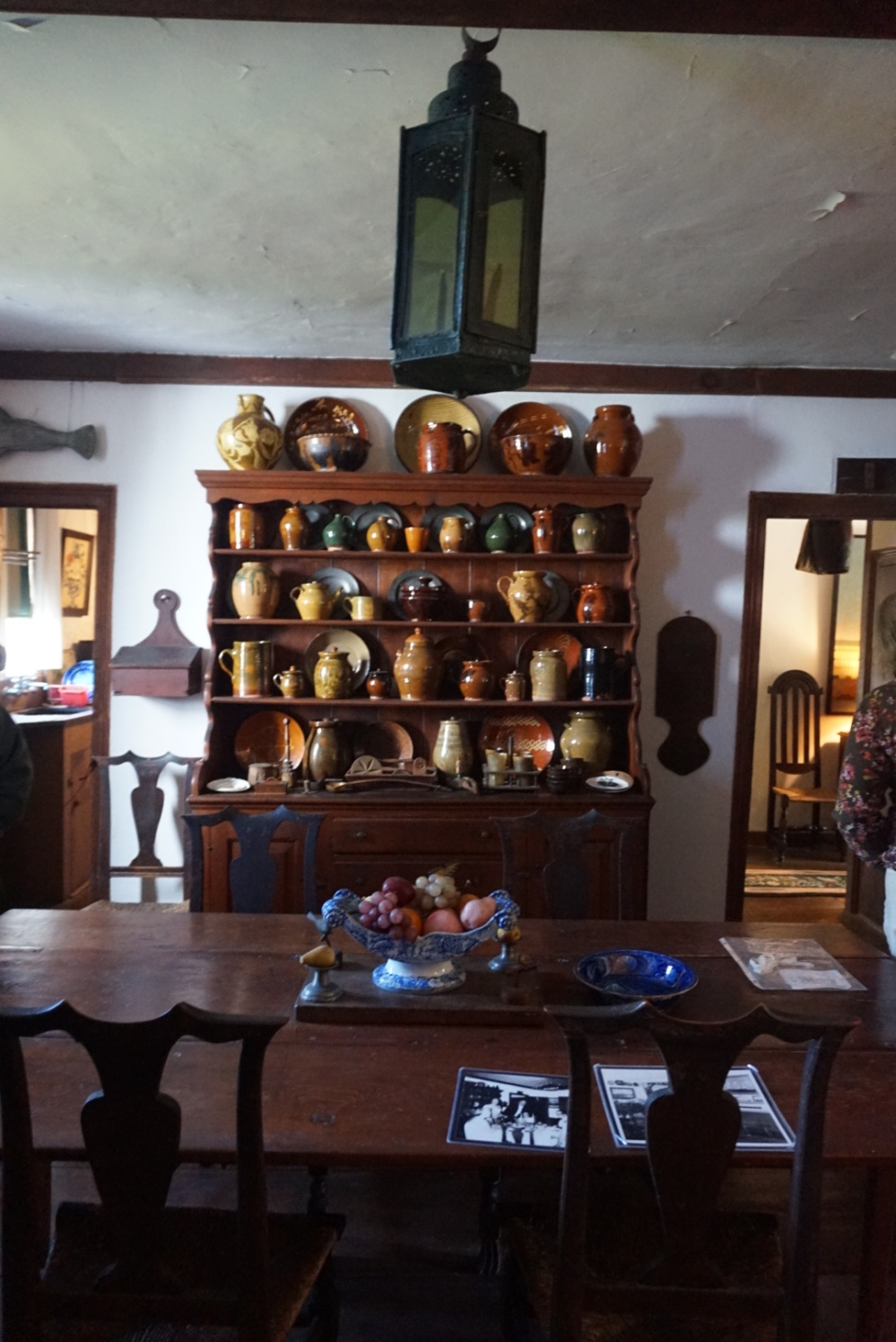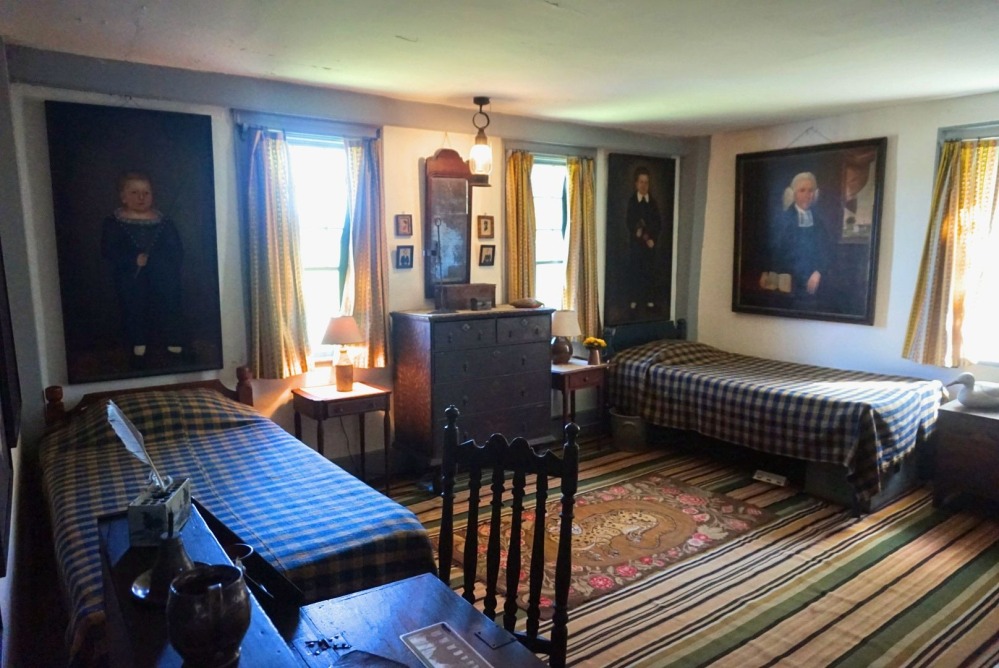The Cogswell’s Grant house marks my 22nd Historic New England home visit – woot woot! And, while I’ve known this for quite some time now, I’m not going to make my original goal to hit all 38 Historic New England homes before November 7, 2019. I was hoping for some sort of time warp, or maybe the addition of 5-10 extra weekends this year so I could make it happen – but, I simply ran out of time! I mean, I’m still pretty proud of hitting 22 and the insane spreadsheet that I made at the beginning of the year that kept me organized and allowed me to stay somewhat on track. The good news is that I certainly didn’t plan to stop visiting homes after hitting that goal, so I can simply keep going! And the better news? I’m going to jolly ol’ England on vacation in the next few weeks – so you’ll have a few posts of the The Historic Old England Project home visits coming your way! (Warning: I have a royal obsession with The Royal Family. Consider yourself warned!)
Historical Highlights
- Essex, MA records dating back to 1636 indicate that John Cogswell was granted 300 acres of land upon his arrival from England on a ship with his wife and eight children, and he settled there to establish a large, successful farm. The farm would stay in the Cogswell family, generation to generation, for over 200 years.
- In 1839, a shipbuilder named Adam Boyd purchased the home & land for $10,000, and while he had his own financial struggles and declared bankruptcy at least once, he lived at the home until his death in 1865. Boyd’s family continued to work the land and lived on the property until 1925, when Frank A. Boyd’s investments in the oil stocks went south. However, the Boyd family is attributed with building the dairy barn and updating the exterior of the house – and are also known for their large flocks of peacocks they raised!
- 1925 saw another change of hands of the home & land, this time to Arthur Dana Story, yet another ship builder who remembers his father working at the Boyd farm when he was young. It doesn’t appear that Arthur lived there, but had tenanted farmers for years. As these were tough times in America being in the midst of the Great Depression, the home & other buildings on the land became rundown – however, this was also one way to preserve the buildings original features, so it is a bit of a double edged sword!
- In 1937, Betram & Nina Little bought the property as a summer home for their growing family and also for their growing collection of antiques. Nina’s cousin had an extensive collection of Americana arts (so much so that she is celebrated at the Smithsonian!) and consulted with Betram & Nina on purchases & helped to catalog their collections.
- They embarked on a restoration of the home, bringing it back to the late nineteenth century with paint colors, woodwork, wallpaper and more – however also added modern amenities like updated bathrooms & kitchen. It’s clear while visiting the home just how much they enjoyed their retreats here from their busy city life in Brookline.
- The Little’s also maintained the property as a working farm, and had year-round caretakers who produced all the food they ate and took care of their cows, sheep, pigs and chickens, and even sent food to them in Brookline. As their collections grew, so did their need for entertaining, and they were always very proud of their “farm to table” lifestyle.
- Betram Little was the director of Historic New England from 1947 – 1970, and almost thirty years prior to their death both Betram & Nina decide to leave the home & its land to Historic New England upon their passing, including their Americana folk art collections. When they both passed away in 1993, the home needed some work, so their collection traveled on the road for two years and even had a stop at the American Folk Art Museum in New York City. The house opened back up to visitors in 1998 and “became the only place in the country where such a major, pioneering collection of American folk art could be seen in the home setting for which it was assembled.” The collection is seen today as it was when the Little’s resided there, as they wanted to live with the objects – not as if they were ‘guests’ in their own museum, which is exactly how it still feels today!
Favorite Spots
Green Sitting Room


Nina went full out to research the ‘original’ colors in each room, and she was pleased to find this earthy green above the fireplace in the front parlor (the color reminds me of the tavern in the Gilman Garrison House!). While the amazingly intricate corner shelf is not original, it surely is a beautiful way to show off some of her collections! The TV is a bit of an antique itself these days, it is a testament to the fact that they truly did live with their collections – not just tip-toeing around them!
Kitchen

There is in fact a small, updated kitchen with refrigerator and some updated appliances, however I like to call this room the kitchen instead. With its huge fireplace and all the warm colors of the large pottery collection, it just feels like a really cozy space.
Mrs. Little’s Study

This is where Nina did a lot of her research & cataloging of her collection – such a great little space! Her collection of bird decoys spreads out into the rest of this home from here, but I’m sure she spent countless hours here putting together their pieces of folk history.
Downstairs Guest Room

This room is the only one in the house that feels a little staged, a little museum-y – but I think it may have been designed that way! Everywhere you look – the floor, the walls, the ceiling, the bed! – are important pieces of their collection.
Renny’s Room


Renny was their son, and there were some really interesting pieces of artwork in this room – 5 of which would have totally creeped me out as a child (and likely as an adult, too). There are six large portraits, five of which are all members of one family. Nina loved being able to make connections between her antiques and real life events, researched and eventually visited the gravestones of those five people and took a photo to bring back to keep in the room with the paintings. ………Interesting.
Eye-Spy
- Make sure to ask about the intricate, wooden coat of arms found in Renny’s bedroom – an interesting piece of history from the American Revolution!
- As mentioned above, Nina loved to ‘connect the dots’ between her artwork and real life events – the ship portrait & the written log from the ship in one of the bedrooms are an incredible pairing!
- Painted eggs – I didn’t know this was a thing one would collect, but apparently so!
- I loved the ‘traveling bar’ in the case found in the guest bedroom downstairs – that is one sure way to get invited back!
Visiting Tips
- This home would be really exciting for anyone that was really into Americana or Folk Art – and while I certainly appreciate it (and grew up in a home with many pieces in that same style), it’s simply not my thing. There is of course something to be said for such an extensive collection, but the home tour really is focused on the Littles and the history behind the pieces within their collection.
- The home still sits on 165 acres of land – and there were plenty of people there who seemed to just be enjoying a hike or walk, so wear comfy shoes!
Top Photos
Below are some of my favorite shots of the Cogswell’s Grant House but I’ll be sharing more on our Facebook & Instagram pages! Enjoy!
I always enjoy your reports
LikeLike